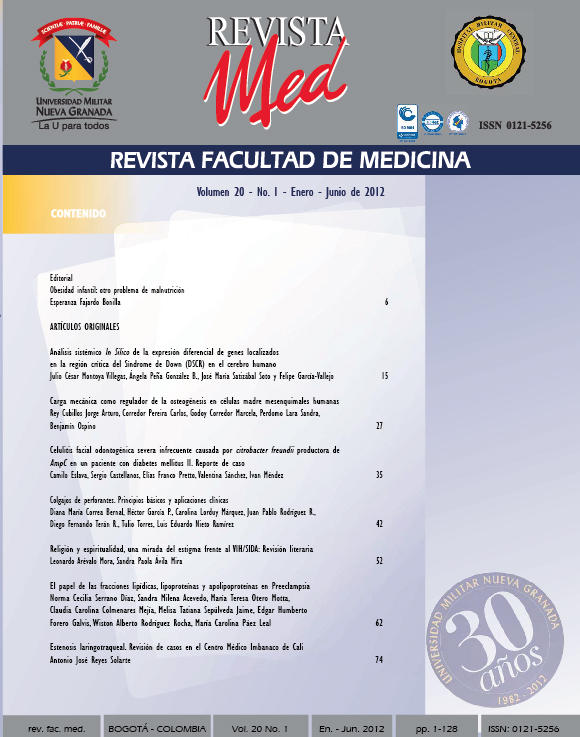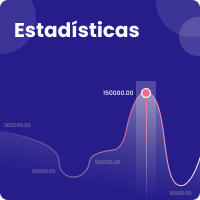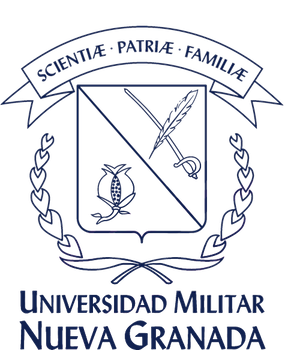Carga mecánica como regulador de la osteogénesis en células madre mesenquimales humanas
Resumen
El papel de la estimulación mecánica en la diferenciación de las células madre mesenquimales humanas (CMMHs) es una alternativa terapéutica para aplicaciones en ingeniería tisular. Este estudio evaluó el efecto de cargas mecánicas sobre la diferenciación de las CMMHs, y los mecanismos celulares que intervienen en el proceso de mecanotransducción. Las CMMHs se sembraron en frascos de cultivo de 75cm2 y fueron expuestas a tensión uniaxial de deformación de 500, 1000, 1500 y 2000 micro strains (μH), con una intensidad de 9 ciclos/minuto por 3 horas durante 4 días consecutivos. Se evaluó la actividad transcripcional de los factores de transcripción Runx2 y Sox9 y de los genes de Osteocalcina (OC), Colágeno tipo 1 (Col-1) y Fosfatasa Alcalina (ALP). Después de la exposición al estímulo, los marcadores osteogénicos Col-1, OC, y ALP se expresaron temporalmente; y los factores de transcripción Runx2 y Sox9 disminuyeron la expresión con respecto a las células de grupo control (sin estímulo), sugiriendo que el estímulo mecánico indujo la diferenciación de las células CMMHs a linaje osteoblástico. La identificación de los genes que traducen los estímulos mecánicos en las CMMHs y modulan la diferenciación osteogénica, tienen proyección directa en medicina regenerativa a través del desarrollo y perfeccionamiento del enfoque de ingeniería de tejidos funcionales.Descargas
Lenguajes:
esReferencias bibliográficas
Kushida N, Kabuyama Y, Yamaguchi O, Homma Y. Essential role for extracellular Ca(2t) in JNK activation by mechanical stretch in bladder smooth muscle cells. Am J Physiol Cell Physiol. 2001; 281: 1165-1172.
You J, Reilly GC, Zhen X, Yellowley CE, Chen Q, Donahue HJ, Jacobs CR. Osteopontin gene regulation by oscillatory fluid flow via intracellular calcium mobilization and activation of mitogen-activated protein kinase in MC3T3-E1 osteoblasts. J Biol Chem. 2001; 276: 13365-13371.
Jessop HL, Rawlinson SC, Pitsillides AA, Lanyon LE. Mechanical strain and fluid movement both activate extracellular regulated kinase (ERK) in osteoblast-like cells but via different signaling pathways. Bone. 2002; 31:186-194.
Weyts FA, Li YS, van Leeuwen J, Weinans H, Chien S. ERK activation and alpha v beta 3 integrin signaling through Shc recruitment in response to mechanical stimulation in human osteoblasts. J Cell Biochem. 2002; 87: 85-92.
Geng WD, Boskovic G, Fultz ME, Li C, Niles RM, Ohno S, Wright GL. Regulation of expression and activity of four PKC isozymes in confluent and mechanically stimulated UMR-108 osteoblastic cells. J Cell Physiol. 2001; 189: 216-228.
Danciu TE, Adam RM, Naruse K, Freeman MR, Hauschka PV. 2003. Calcium regulates the PI3K-Akt pathway in stretched osteoblasts. FEBS Lett. 2003; 536: 193-197.
Ziros PG, Gil AP, Georgakopoulos T, Habeos I, Kletsas D, Basdra EK, Papavassiliou AG. The bone-specific transcriptional regulator Cbfa1 is a target of mechanical signals in osteoblastic cells. J Biol Chem. 2002; 277: 23934-23941.
Franceschi RT, Xiao G, Jiang D, Gopalakrishnan R, Yang S, Reith E. Multiple signaling pathways converge on the Cbfa1/ Runx2 transcription factor to regulate osteoblast differentiation. Connect Tissue Res. 2003; 44: 109-116.
Lian JB, Javed A, Zaidi SK, Lengner C, Montecino M, van Wijnen AJ, Stein JL, Stein GS. Regulatory controls for osteoblast growth and differentiation: Role of Runx/ Cbfa/AML factors. Crit Rev Eukaryot Gene Expr. 2004; 14: 1-41.
Wang FS, Wang CJ, Sheen-Chen SM, Kuo YR, Chen RF, Yang KD. Superoxide mediates shock wave induction of ERK-dependent osteogenic transcription factor (CBFA1) and mesenchymal cell differentiation toward osteoprogenitors. J Biol Chem. 2002; 277: 10931-10937.
Ontiveros C, McCabe LR. Simulated microgravity suppresses osteoblast phenotype, Runx2 levels and AP-1 transactivation. J Cell Biochem- 2003; 88: 427-437.
Meyers VE, Zayzafoon M, Gonda SR, Gathings WE, McDonald JM. Modeled microgravity disrupts collagen I/integrin signaling during osteoblastic differentiation of human mesenchymal stem cells. J Cell Biochem. 2004; 93: 697–707.
Liedert A, Kaspar D, Blakytny R, Claes L, Ignatius A. Signal transduction pathways involved in mechanotransduction in bone cells. BiochemBiophys Res Commun. 2006; 349(1): 1-5.
Boutahar N, Guignandon A, Vico L, Lafage-Proust MH. Mechanical strain on osteoblasts activates autophosphorylation of focal adhesion kinase and proline-rich tyrosine kinase 2 tyrosine sites involved in ERK activation. J Biol Chem. 2004; 279: 30588-30599.
Katz S, Boland R, Santillan G. Modulation of ERK . and p38 MAPK signaling pathways by ATP in osteoblasts: Involvement of mechanical stress-activated calcium influx, PKC and Src activation. Int J Biochem Cell Biol. 2006; 38: 2082-2091.
Livak KJ, Schmittgen TD. Analysis of relative gene expression data using real-time quantitative PCR and the 2 (-Delta Delta C(T)) Method. Methods. 2001; 25(4): 402-8
Chen H, Lin Y, Zhongfang L, Jun Y, Junjie Z, Xu D, et al. Detection of CCND1 amplification using laser capture microdissection coupled with real-time polymerase chain reaction in human esophageal squamous cell carcinoma, Cancer Gen. Cytogen. 2007; 175: 19e-25.
Somerman MJ, Archer SY, Imm GR, Foster RA. A comparative study of human periodontal ligament cells and gingival fibroblasts in vitro. J Dent Res 1988; 67: 66-70.
Ducy P,, Zhang R, Geoffroy V, Ridall AL, Karsenty G. Osf2/ Cbfa1: A transcriptional activator of osteoblast differentiation. Cell. 1997; 89(5): 747-754.
Kawarizadeh A, Bourauel C, Gotz W, Jager A. Early responses of periodontal ligament cells to mechanical stimulus in vivo. J. Dent. Res. 2005; 84(10):902-906.
Ziros PG, Gil AP, Georgakopoulos T, Habeos I, Kletsas D, Basdra EK, et al. The bone-specific transcriptional regulator Cbfa1 is a target of mechanical signals in osteoblastic cells. J. Biol. Chem. 2002; 277(26): 23934-23941.
Caetano-Lopes J, Canhao H, Fonseca JE. Osteoblasts and bone formation. ActaReumatol. Port. 2007; 32(2): 103-110.
Kearney EM, Farrell E, Prendergast PJ, Campbell VA. Tensile Strain as a Regulator of Mesenchymal Stem Cell Osteogenesis. Ann Biomed Eng. 2010; 38(5): 1767-79.
Arpornmaeklong P, Brown SE, Wang Z, Krebsbach PH.Phenotypic characterization, osteoblastic differentiation, and bone regeneration capacity of human embryonic stem cell-derived mesenchymal stem cells. Stem Cells Dev. 2009; 18(7): 955-68.
Ali MM, Yoshizawa T, Ishibashi O, Matsuda A, Shimomura J, Mera H, Nakashima K, Kawashima H. PIASx beta is a key regulator of osterix transcriptional activity and matrix mineralization in osteoblasts. J Cell Sci. 2007; 120: 2565-2573.
Lee HL, Yi TG, Woo KM, Ryoo HM, Kim GS, Baek JH. Msx2 mediates the inhibitory action of TNF-
M. Koike, H. Shimokawa, Z. Kanno, K. Ohya, K. Soma Effects of mechanicalstrain on proliferation and differentiation of bone marrow stromal cell line ST2J Bone Miner Metab. 2005; 23: 219-225.
J. Liu, T. Liu, Y. Zheng, Z. Zhao, Y. Liu, H. Cheng, S. Luo, Y. Chen Early responses of osteoblast-like cells to different mechanical signals through various signaling pathways. BiochemBiophy Res Commun.2006; 348: 1167-1173.
Kirkham GR, Cartmell SH. Genes and Proteins involved in the regulation of Osteogenesis. En: Ashammakhi N, Reis R, Chiellini E, editores. Topics in Tissue Engineering. 2007. Vol. 3.
Koike M, Shimokawa H, Kanno Z, Ohya K, Soma K.Effects of mechanical strain on proliferation and differentiation of bone marrow stromal cell line ST2.J Bone Miner Metab. 2005; 23(3): 219-25.
Mundy G.R, Cytokines and growth factors in the regulation of bone remodeling. Journal of Bone and Mineral Research. 1993; 8(S2): S505-S510.
Nather A., Ong H.J.C., Aziz Z. Structure of Bone. En: Bone Grafts and Bone Substitutes: Basic Science And Clinical Applications. World Scientific. Aziz Nather Editorial. 2005; 3-17.
Kobayashi T, Kronenberg H. Minireview: transcriptional regulation in development of bone. Endocrinology. 2005; 146(3): 1012-7.
Ducy P, Desbois C, Boyce B, Pinero G, Story B, et al.. Increased bone formation in osteocalcin-deficient mice. Nature. 1996; 382(6590): 448-452.
Hall, B. K, Miyake T. All for one and one for all: Condensations and the initiation of skeletal development. Bioessays. 2000; 22(2): 138-147.
Owen, TA, Aronow M, Shalhoub V, Barone LM, Wilming L, Tassinari MS, et al. Progressive development of the rat osteoblast phenotype in vitro: Reciprocal relationships in expression of genes associated with osteoblast proliferationand differentiation during formation of the bone extracellular matrix. J. Cell. Physiol. 1990; 143(3): 420-430.
Saito Y, Yoshizawa T, Takizawa F, Ikegame M, Iahibashi O, Okubo K, et al. A cell line with characteristics of the periodontal ligament fibroblasts is negatively regulated for mineralization and Runx2/Cbfa1/Osf2 activity, part of which can be overcome bybone morphogenetic protein-2. J Cell Sci. 2002; 115: 4191-4200.
Tai G, Polak JM, Bishop AE, Christodoulou I, Buttery LD. Differentiation of osteoblasts from murine embryonic stem cells by overexpression of the transcription factor Osx. TissueEng. 2004; 10: 1456-1466. 39. Tu Q, Valverde P, Chen J. Osx enhances proliferation and osteogenic potential of bone marrow stromal cells. Biochem- Biophys Res Commun. 2006; 341: 1257-1265.
Wu L, Wu Y, Lin YF, Jing W, Nie X, Qiao J,et al. Osteogenic differentiation of adipose derived stem cells promoted by overexpression of Osx. Mol Cell Biochem. 2007; 301: 83-92.
Jones DB, Nolte H, Scholubbers JG, Turner E, Veltel D. Biochemical signal transduction of mechanical strain inosteoblastlike cells. Biomaterials. 1991; 12: 101-110.







.png)





